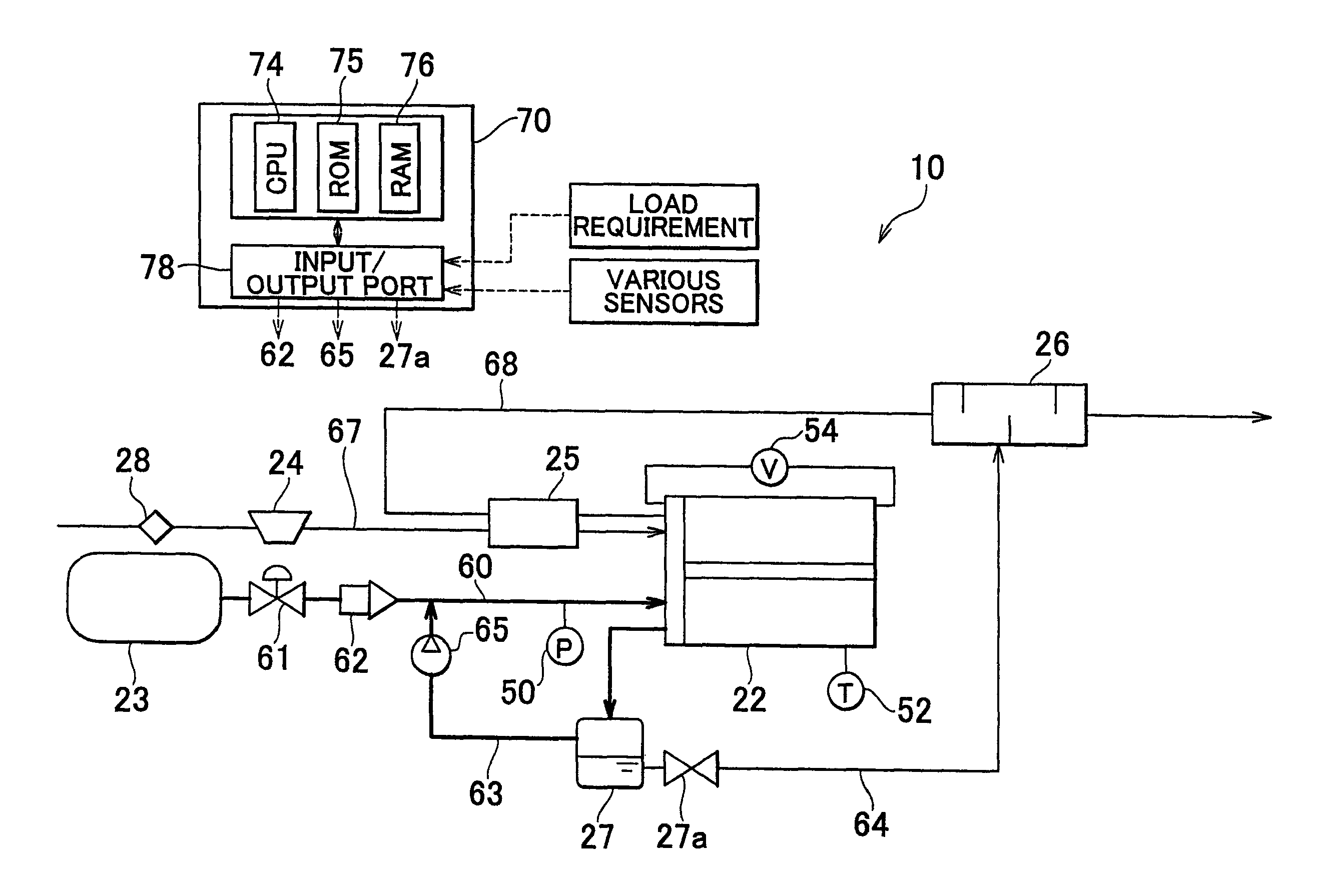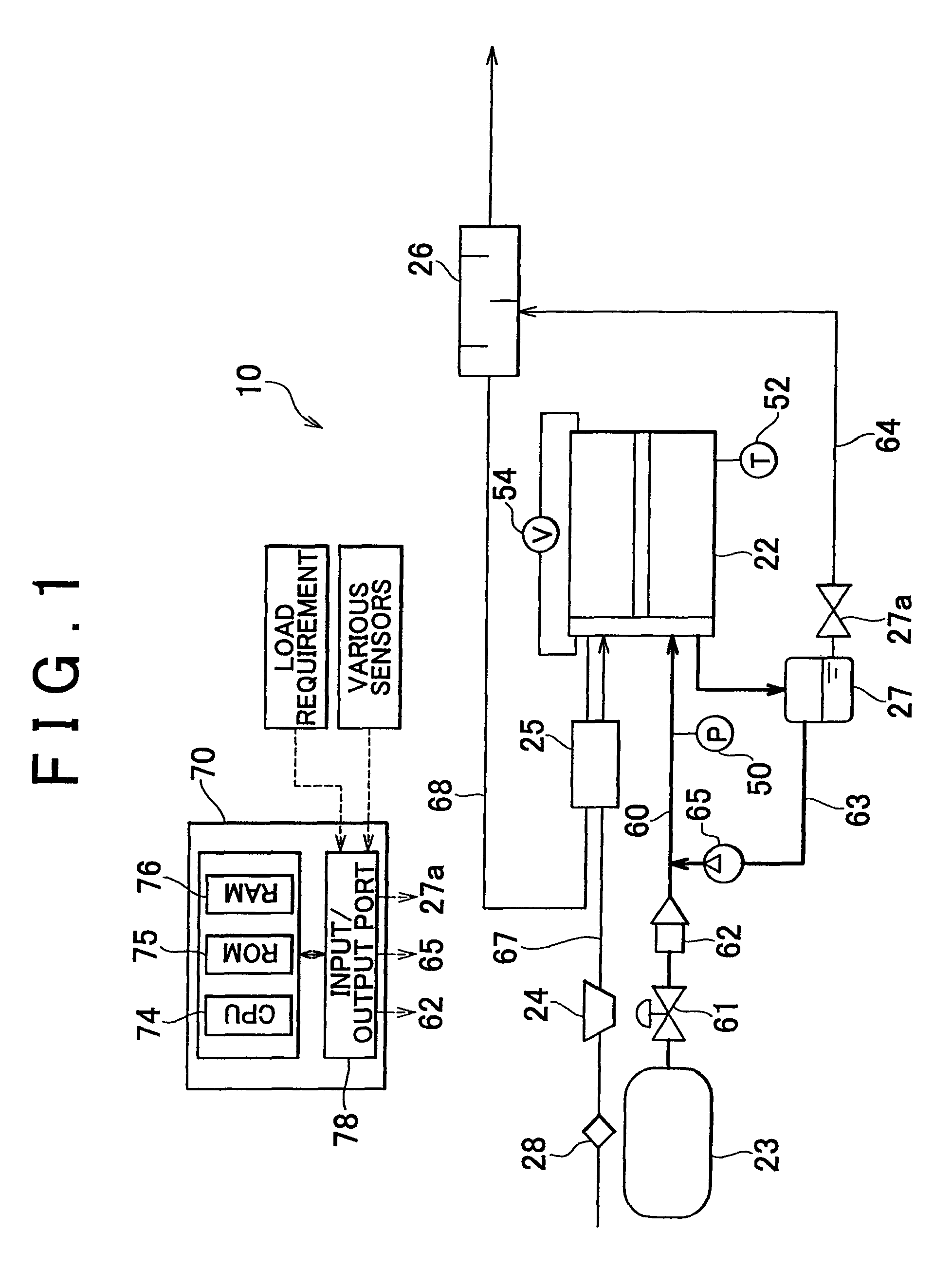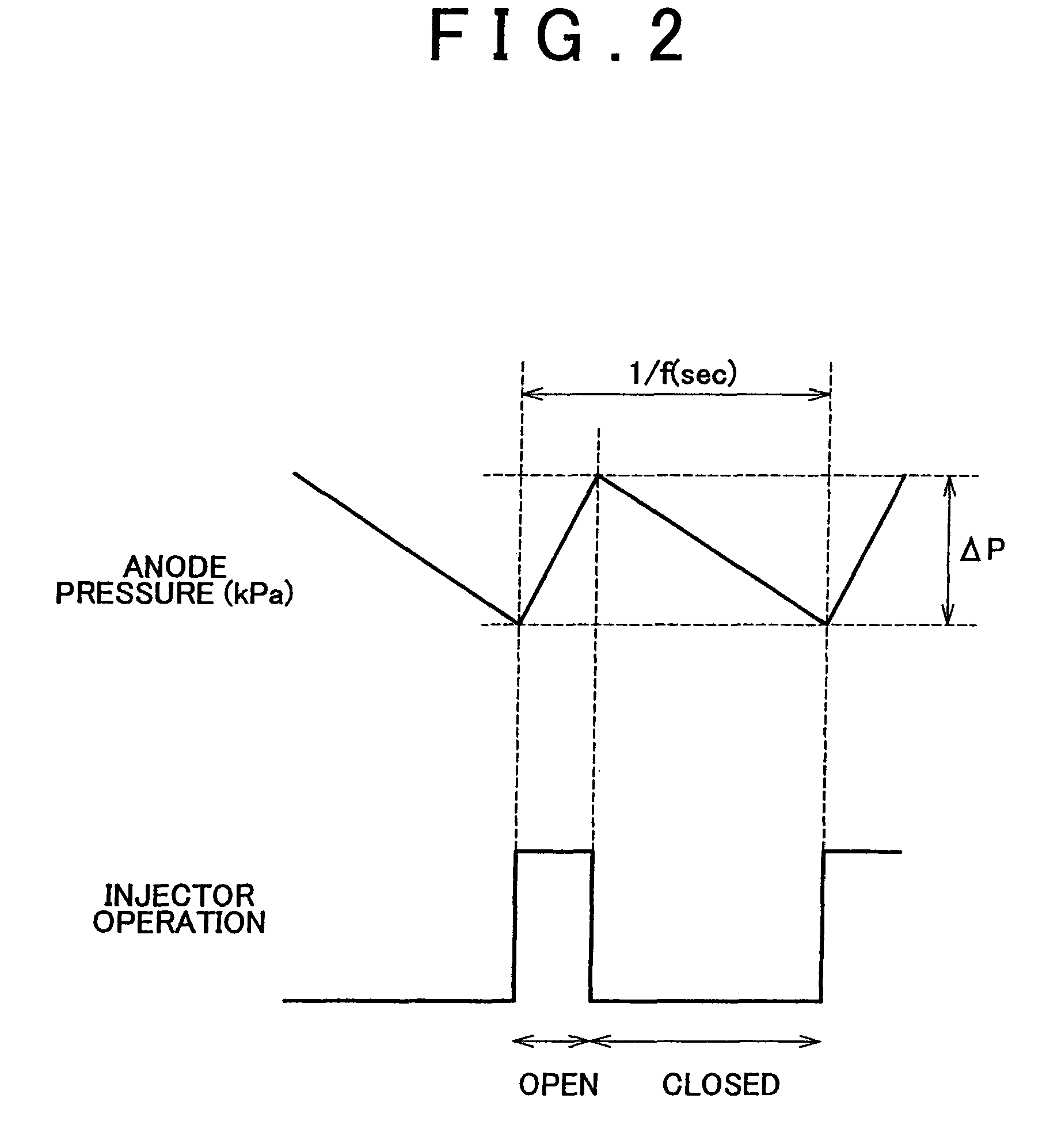Fuel cell system and method for adjusting moisture content in a polymer electrolyte membrane
a polymer electrolyte membrane and fuel cell technology, applied in the field of fuel cell systems provided with, can solve the problems of reducing battery performance, increasing power consumption, and reducing output voltage, so as to reduce the performance decline of fuel cells, reduce energy efficiency, and increase loss
- Summary
- Abstract
- Description
- Claims
- Application Information
AI Technical Summary
Benefits of technology
Problems solved by technology
Method used
Image
Examples
first modified example
D1. First Modified Example
[0055]In the foregoing example embodiment, the determination with respect to the moisture content in the electrolyte membrane in step S110 in FIG. 4 is made based on the output voltage value of the fuel cell 22 after excluding a case in which flooding can occur in step S100 in FIG. 4. Alternatively, however, that determination may also be made on a different basis.
[0056]For example, instead of steps S100 and S110, the determination as to whether the moisture content in the electrolyte membrane is low may be made based on the internal temperature of the fuel cell 22. In step S100, it is determined that the fuel cell 22 is in a predetermined low temperature state when the internal temperature of the fuel cell 22 is 80° C. or less so that flooding can be eliminated. In contrast, it may be determined that the moisture content in the electrolyte membrane is low when the internal temperature of the fuel cell 22 is a temperature at which it is conceivable that the...
second modified example
D2. Second Modified Example
[0057]Alternatively, instead of steps S100 and S110, the determination as to whether the moisture content in the electrolyte membrane is low may be made based on the membrane resistance of the electrolyte membrane. As described above, when the membrane moisture content drops the membrane resistance of the electrolyte membrane increases. Therefore, when the membrane resistance increases to a predetermined value or beyond it can be determined that the moisture content is low. However, detecting the membrane resistance itself is difficult. Of the internal resistance of the fuel cell 22, the membrane resistance greatly changes depending on the power generating condition. Therefore, the determination may be made by obtaining the internal resistance of the fuel cell 22. The internal resistance of the fuel cell 22 may be obtained by the AC impedance method described above, for example. When the value of the AC impedance is equal to or greater than a predetermined...
third modified example
D3. Third Modified Example
[0058]It is also possible to determine whether the moisture content in the electrolyte membrane is low based on a drop in the pressure of the oxidizing gas supplied to the cathode (i.e., a cathode pressure drop). That is, a pressure sensor that detects the pressure of the oxidizing gas is provided in both the oxidizing gas supply passage 67 and the cathode off-gas passage 68, and the cathode pressure drop, which is the difference between the two detection values, is obtained. When the obtained cathode pressure drop is less than a predetermined value, it can be determined that the moisture content in the electrolyte membrane is low. This is because when the membrane moisture content is low there is not much liquid water in the oxidizing gas flow path so the oxidizing gas flow is not impeded as much by the liquid water, hence the pressure drop decreases.
[0059]More specifically, a gas flowmeter may also be provided in the oxidizing gas supply passage 67 of the...
PUM
| Property | Measurement | Unit |
|---|---|---|
| frequency | aaaaa | aaaaa |
| temperature | aaaaa | aaaaa |
| temperature | aaaaa | aaaaa |
Abstract
Description
Claims
Application Information
 Login to View More
Login to View More - R&D
- Intellectual Property
- Life Sciences
- Materials
- Tech Scout
- Unparalleled Data Quality
- Higher Quality Content
- 60% Fewer Hallucinations
Browse by: Latest US Patents, China's latest patents, Technical Efficacy Thesaurus, Application Domain, Technology Topic, Popular Technical Reports.
© 2025 PatSnap. All rights reserved.Legal|Privacy policy|Modern Slavery Act Transparency Statement|Sitemap|About US| Contact US: help@patsnap.com



